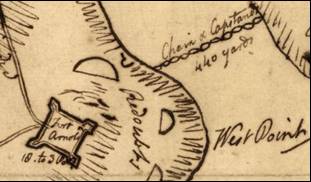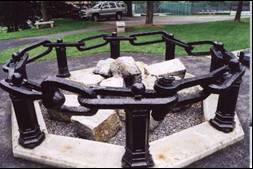Revolutionary War;
Resource Use; Modifying Environment
Sterling Iron Works:
British Invasion Halted by Local Iron
British Invasion Halted by Local Iron
January 14, 1778
“…Your committee, who were sent to ascertain the place for fixing a chain and erecting fortifications for obstructing the navigation of Hudson’s river, beg leave to report… From these considerations, the committee are led to conclude that the most proper place to obstruct the navigation of the river is at West Point..” Jno. Sloss Hobart,Henry Wisner,John Hathorn,Zepha. Platt [Included as note, Public Papers of George Clinton Vol. II No. 1021]
“…Your committee, who were sent to ascertain the place for fixing a chain and erecting fortifications for obstructing the navigation of Hudson’s river, beg leave to report… From these considerations, the committee are led to conclude that the most proper place to obstruct the navigation of the river is at West Point..” Jno. Sloss Hobart,Henry Wisner,John Hathorn,Zepha. Platt [Included as note, Public Papers of George Clinton Vol. II No. 1021]


The Great Chain helped save the war; Warwick’s John Hathorn penned the report about its placement, and the Sterling Forge created it.
West point Map
drawn from description of a
deserter, 1779. From the Library of Congress/
Links of the Great Chain at West Point
Ruins of Sterling
Forge